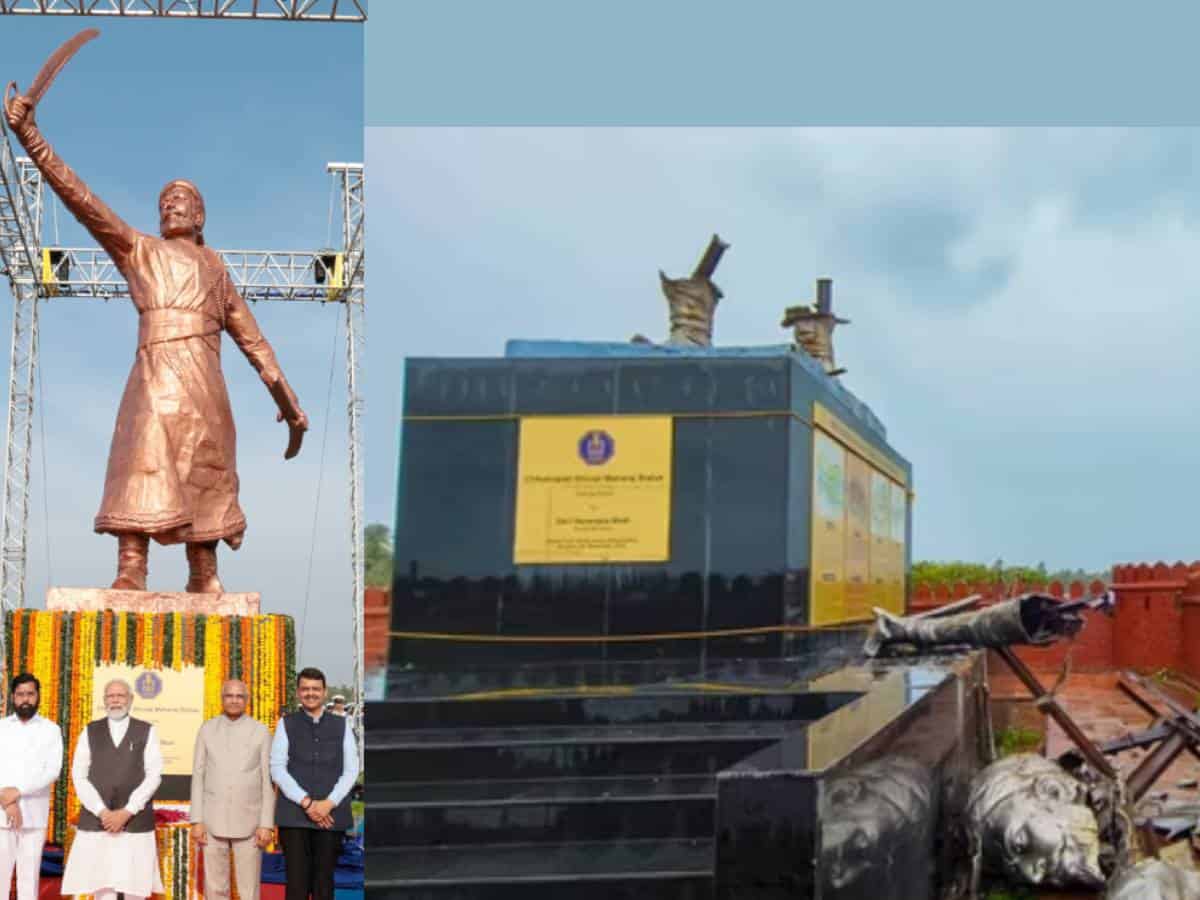
Within a month of its collapse, the Maharashtra Government has initiated a tendering process to build a new statue of Chhatrapati Shivaji on the Rajkot Fort in south Konkan coast and it is in a tearing hurry to finalise it as soon as possible before the poll-related model code of conduct is announced. The Maharashtra Assembly elections are due in November and its announcement is expected as soon as the Haryana, and Jammu and Kashmir results are out.
This time the statue would be 60 feet, from head to toe, and its height would be elevated depending on how high the pedestal would be. A budget of Rs 20 cr has been set apart for this project which would have the great Maratha warrior in a standing posture, one arm raising his sword and the left hand holding the sheath. The tender-related documents speak of the expected “visual impact” and be “an engineering landmark”. The intent is to “re-animate” the “life and times” of Shivaji.
This project is being undertaken entirely by the state itself before all questions raised by the collapse of the earlier statue are found. Who had hurried it to be prepared and installed before December 4 last year for the prime minister to Narendra Modi inaugurate it. Who prepared the specifications and approved it as safe and why did the Naval Dockyard issue the work order when the Maharashtra Government paid Rs 2.4 crore for it. When the state government picked up the bill, why did it leave the maintenance to the Navy, evident from the fact that the state PWD brought the Navy’s attention to corrosion?
The joint committee of the officials of both the state government and the Indian Navy formed within a week of the collapse in August is yet to determine the entire cause – from concept to erection to the disheartening collapse – but the new project has been brought forward. None wants to wait for answers. And answers with paperwork relating to the old project are of vital importance because responsibility can be pinned down.
It is unlikely that anyone would object to the speed the government is aiming at. Shivaji is a sacred icon and across castes, he is a revered idol. Any comments would be restricted to calls for ensuring quality and stability. The political part is the target of getting the tender-processing done before the Election Commission of India. Even if the Opposition were to ignore it, the government likely becomes vulnerable to problems ahead. It has of course consulted some senior sculptors like Ram Sutar who designed the gigantic Sardar Vallabbhai Patel statue in Gujarat.
While his expertise and experience would be immensely useful, what raises eyebrows is the sheer size of the proposed statue. It is big though smaller than the 100-ft one immediately announced in an off-the-cuff-manner. It was a surprise then itself because the fort is smaller than one would imagine. There is hardly any elbowroom for such a massive statue there on the flat surface atop the fort.
The idea which is driving the new project is grand indeed and may later include, sources says, of acquisition of some seven acres of land to make it into a theme-park on Shivaji’s times the flavour of which they want to capture. The statue part of the plan calls for a bronze cladding of a skeletal structure much like the old but smaller one. It has to be designed for a life of 100 years. The maintenance contract is for 10 years initially.
The problem with the collapsed 27-feet statue on an eight-foot pedestal was the difficulty in working on it. The sculptor who executed it had found it difficult to carry it up the fort. Consequently he employed, according to him, 3-D printers atop the fort. Now a bigger one may require some new means to execute the task but unlike the less-experienced team of the past, engineering may overcome the hurdle.



